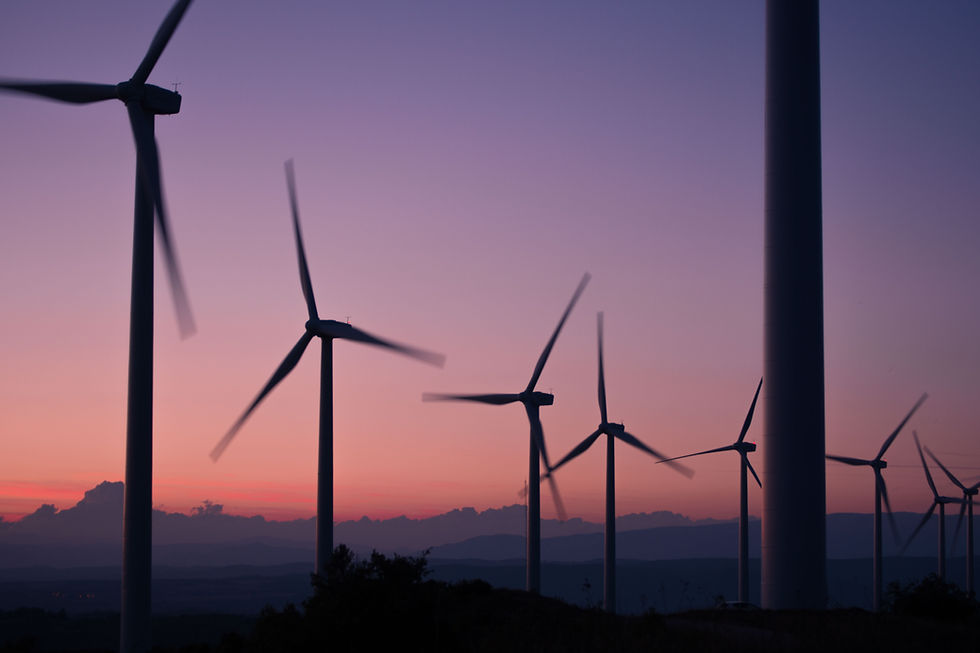Time for the U.S. to catch up — Fossil fuels are now less than half of China’s power capacity
- Miquéla Thornton
- Jun 16, 2023
- 2 min read

In 2021, the Chinese government set a goal for renewable capacity to exceed that of fossil fuel energy sources by 2025, and now, two years later and two years ahead of schedule, China has made good on that ambition.
As China’s state media outlet, Xinhua said on Monday, citing an official state planner at the National Reform and Development Commission, the country’s non-fossil fuel power sources, such as wind and solar power, account for 50.9% of the country's total installed capacity, leaving fossil fuels to account for 49.1%.
According to China’s official figures, last year, coal accounted for more than 56% of power consumption, while renewables — including nuclear power — accounted for less than 26%.
Throughout 2022 and 2023 China launched several renewable megaprojects to change this, such as when it broke ground in January on a $12 billion desert energy megaproject including robust amounts of solar and wind energy, and its 2022 $1 trillion infrastructure plan that included investments for wind farms, hydro plants, solar power “bases” and high-voltage transmission lines to get renewable energy to its densely populated areas like Beijing.
That means that not only on track to exceed its initial targets, with its previous main-energy provider coal, becoming more of a supporting power source for grid stability rather than a “mainstay” as Carbon Brief puts it, but the U.S. will now be playing a game of catch up.
The most up-to-date data from the U.S. Energy Information Administration shows that fossil fuels including gas, coal, and petroleum, account for 60% of U.S. electricity generation, with nuclear accounting for a little over 18% and renewables at 21.5%.
As China has a target to meet its peak of carbon emissions by 2030, the White House has set a target to be at 80% renewable energy capacity by the same year, 100% five years later, and net-zero emissions economy-wide by 2050.
That means that in 7 years, the U.S. will have at least double the current renewable capacity, likely including nuclear power.
NPR has an excellent accumulation of expert interviews as to how the U.S. could achieve this, whether it be replacing 80% of coal plants with nuclear power or building out massive offshore wind farms, and leveraging the importance of energy storage.
The U.S. is poised to invest more than half a trillion dollars in clean energy and climate action over the next decade, and time will tell if the ambitious targets are hit with a bullseye. The goals may seem audacious, but in 2022, solar, wind, and other renewable energy sources provided nearly three-quarters of new electrical generating capacity, far exceeding the expectations of regulators, and growing much faster than they predicted.
As China is showing, big quick change is possible, and perhaps the ahead-of-schedule targets achieved by China may help kick the U.S. into hyperspeed on climate action and a just energy transition.





Don’t let the old-school graphics fool you—Retro Bowl packs more intensity and decision-making than most modern sports games. Signing players, handling the media, and making that final touchdown? All up to you.
It’s loud, it’s fast, it’s nonsense — and it’s glorious. Italian Brainrot Clicker is the most absurd clicker game of the decade.
Snow Rider's design is straightforward but exquisite. Particularly during the winter or holiday season, the game feels serene and delightful due to its snowy setting and calming soundtrack.
Slope Game delivers fast-paced, adrenaline-fueled action where players control a rolling ball, dodging obstacles and navigating endless slopes with precise movements to survive as long as possible.